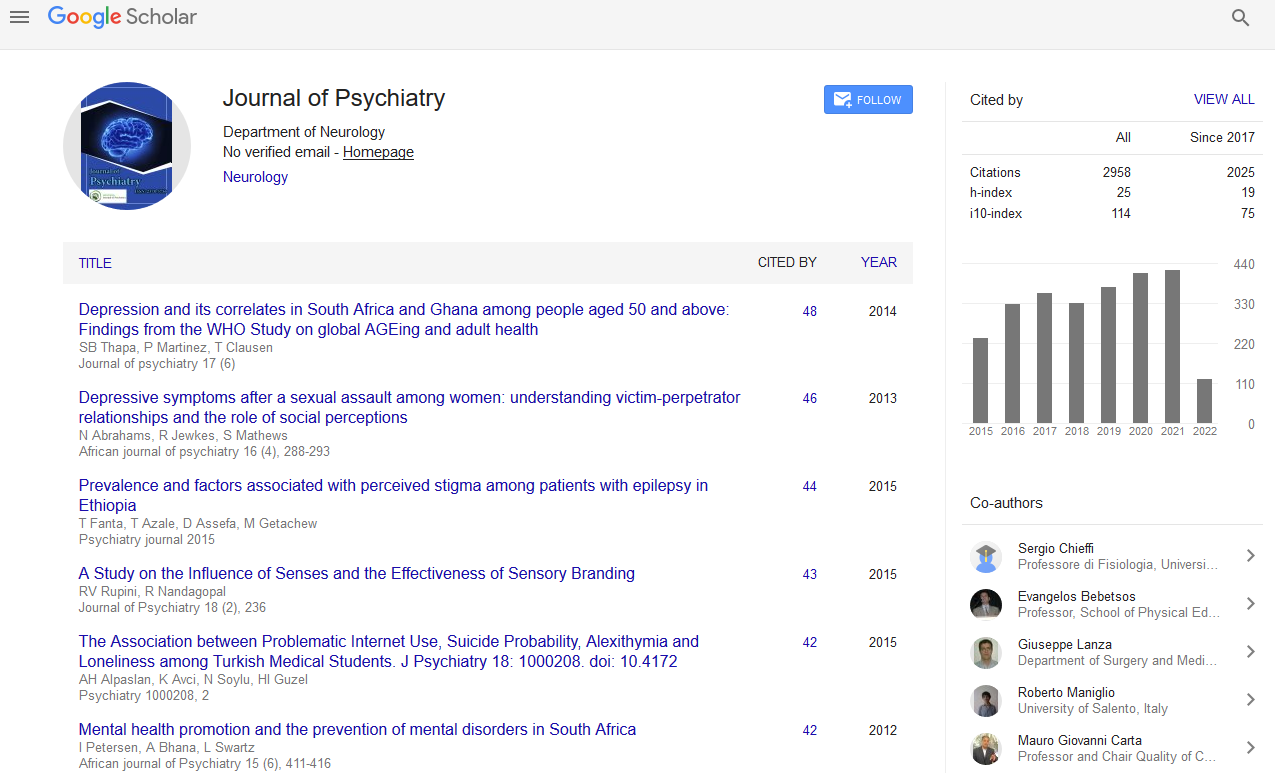PMC/PubMed Indexed Articles
Indexed In
- RefSeek
- Hamdard University
- EBSCO A-Z
- OCLC- WorldCat
- SWB online catalog
- Publons
- International committee of medical journals editors (ICMJE)
- Geneva Foundation for Medical Education and Research
Useful Links
Share This Page
Open Access Journals
- Agri and Aquaculture
- Biochemistry
- Bioinformatics & Systems Biology
- Business & Management
- Chemistry
- Clinical Sciences
- Engineering
- Food & Nutrition
- General Science
- Genetics & Molecular Biology
- Immunology & Microbiology
- Medical Sciences
- Neuroscience & Psychology
- Nursing & Health Care
- Pharmaceutical Sciences
Abstract
Evaluation of Neurofeedback Therapy in Adolescents with Major Depressive Disorder Who Take Fluoxetine
Peyman Hashemian and Seyed Alireza Sadjadi
Introduction: Major depression is one of the most common psychiatric disorders that is with depressed mood and characterized by feelings of sadness, low self esteem and lack of interest or pleasure in daily activities. Objective: The main aim of this article is comparison of efficacy of real neurofeedback therapy versus sham (unreal or placebo) in adolescents with major depressive disorder in Iran, Mashhad. Material & Method: This study included 28 adolescents with major depression that were diagnosed by psychiatric interview according to DSM -V and Hamilton scale. They were randomly divided into two groups. All patients were treated with 20 mg of fluoxetine. Half received neurofeedback treatment on F3 region and the other half received unreal neurofeedback treatment or sham (placebo). Immediately after the 20th session Hamilton test was conducted. Results: The efficacy of treatment with real and unreal neurofeedback on adolescents' depression shows difference in scores. The differences between pre-test and post-test scores within each group and finally between the two groups were compared using independent t-test. According to the results, the index calculated t (-0.9) is not significant. So there is no significant difference between real and unreal neurofeedback effects. Conclusion: This study shows that real neurofeedback therapy was effective; but this efficacy was not significantly different from unreal neurofeedback therapy in adolescent depression. This means that in F3 region, the effect of real neurofeedback therapy was not any different from unreal neurofeedback on adolescents' depression. Experiments on other regions are suggested.


